#outcross breed
Text










🐱 Lykoi [Sebaceous Cysts], Lykoi 2G Outcross
📸 Faolan Lykoi
🎨 Black with White
#photo#outcross breed#lykoi#LYK#LYS#black#other white#n 09#comparison#breed comparison#age progression#molting#b: faolan
26 notes
·
View notes
Text
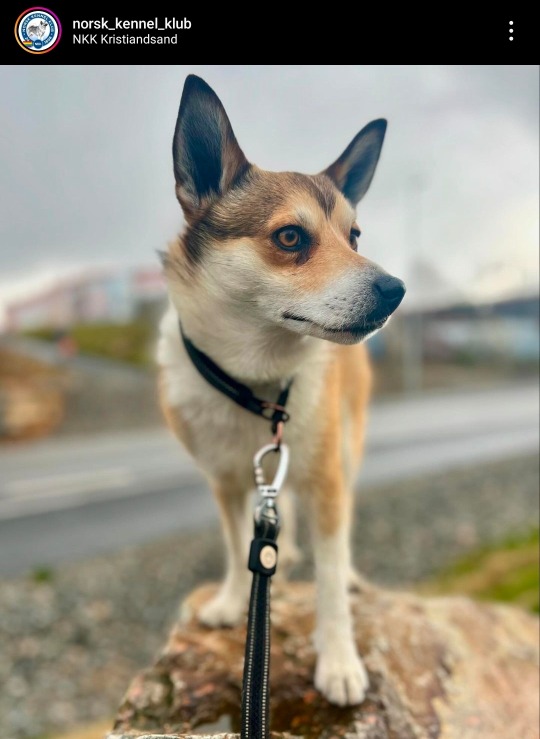
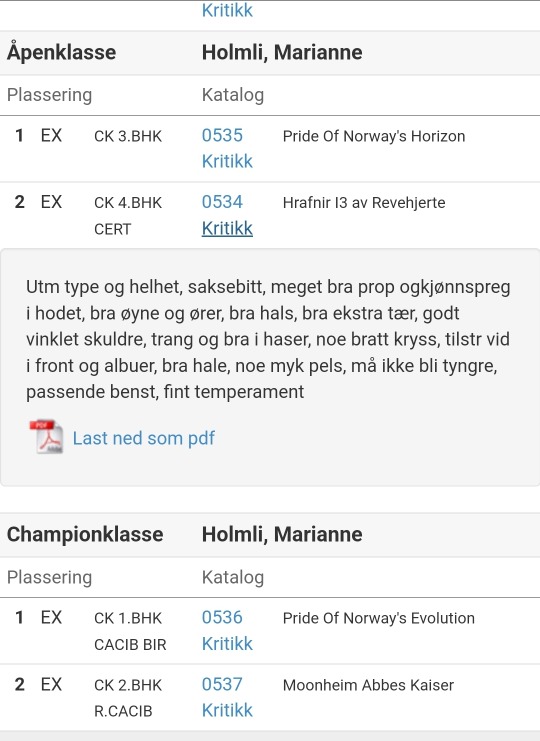
Hrafnir I3 av Revehjerte was the first of the outcross project dogs to gain full registration in february last year, and yesterday at rhe first national show of the year he got his grand CAC and is now the first project dog to become Champion!
67 notes
·
View notes
Text



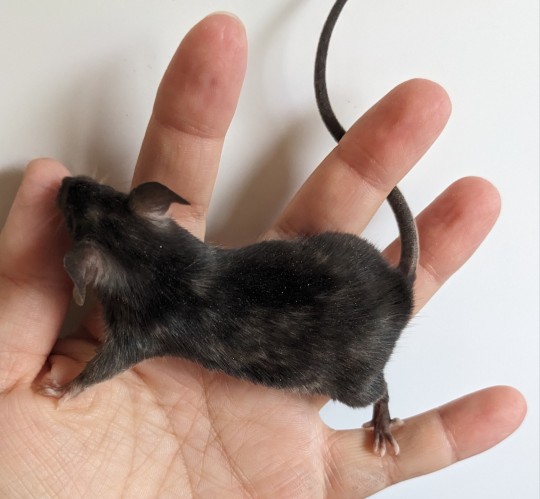
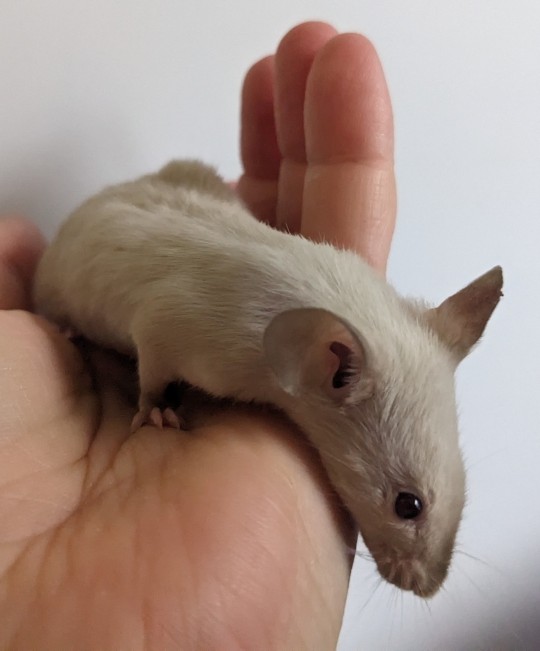


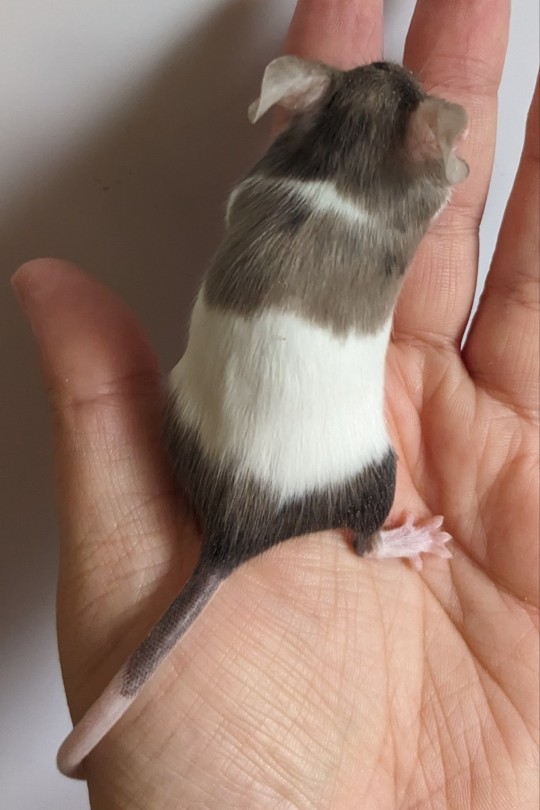
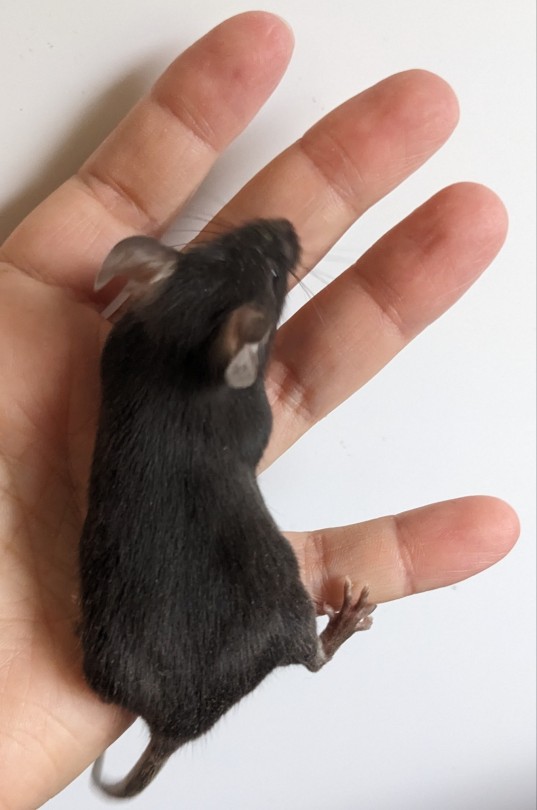
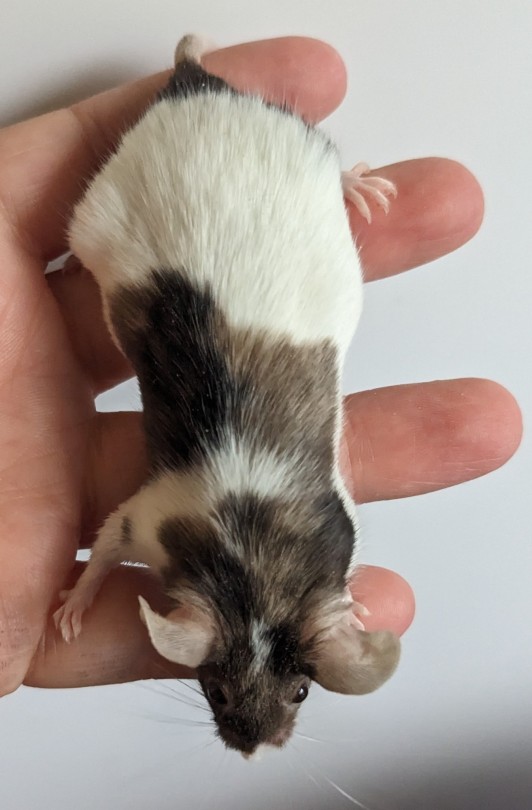
I've been busy the last few days so not many pet pics but have some mouse spam! These are the ladies looking for new homes!
#mice#mouse#my pets#rodent#rodents#tricolor line#splash line#black line#siamese line#I'm honestly two seconds away from saying fuck it to the Siamese line#they do not want to breed and i cannot make them#even outcrossing has not really helped#they're SUCH poor breeders#small litters of all boys#ugh
134 notes
·
View notes
Note
thank you for such a thorough answer to my question about COI!! i don’t know anything at all about dog breeding, all of mine have come off the streets lol. it is BONKERS to me that the breed average for collies is 40%. so does that mean that most of the collies i see out in the world are kind of related? also i know you said w dobermans there’s not really any way to breed away from it, is it the same with collies? are breeders working to move that average % down?
thank you for sending me an ask that tickled the 'adhd special interests' section of my brain lmao
so are all collies related - yes and no. yes, in the sense that they all descend from the same ancestors and share genetics. no, in the sense that on paper they're not related. for example: stellina comes from a long-time breeder of show dogs on the US east coast. @as-old-roads audrey (my beloved) was a rehome who originally came from a midwest puppy mill. our dogs do not have any shared members of the family tree for several generations back. they're, at best, extremely distant cousins. and when we compared their DNA test results... they were 50% genetic matches for each other. that's not from being actual relatives - that's just because the collie gene pool is small enough that if you take a random scoop, you overlap with someone else 🤷
is there a way to breed away from high COI - not really, which is the tricky part of it. COI will always accumulate over time, meaning that as long as no new blood is introduced, each generation will have higher COI than the last. the way to combat this is A) start with a very large population of founding dogs (obv not an option for collies anymore, as the breed was developed in the 1800s); B) allow new blood through an "open studbook" (anyone with a collie-ish dog can breed their dog and have the offspring registered as collies if it's determined they look enough like a pure collie); or C) dedicated outcross programs (specifically seeking out unrelated collie-type dogs to cross to pure collies and then breeding those offspring back to pure collies to try and add more diversity without sacrificing the breed type)
the first option (large founding population) isn't viable anymore - we know that the original collies were developed from the native working farm dogs in whats now the UK, and then people said 'hey these dogs are pretty' and started breeding them specifically for bench/show moreso than herding, which is what makes the collies such a (IMO) lovely blend of herding and companion/family dog. we know other dogs were crossed in during development, but we don't have records of what: we've heard rumors that borzoi were added, and gordon setter, among others, but we can't say for sure. but regardless, this ship has sailed.
the second two options - the open studbook and outcross problems - are workable in theory, however they're not magic fix-alls. while COI/diversity is very important, it's also not the end-all be-all to health (as evidence by the fact that collies as a breed are doing really good health-wise). however, the biggest positive is also the biggest negative: you're diluting what's already in the gene pool. collies have high COI, but they also have very unique temperaments - they're very gentle, polite, exceptional with children, watchful but non-aggressive, intelligent, driven but not obsessive. i love the collie personality - that's what makes them collies, and not just random fluffy herding dogs. the idea of bringing in non-collies to the studbooks and creating generations of dogs that didn't have that same unique collie personality is so, so sad for me to think about. and yes in theory you can try and breed back to the traits you like, but what if you've now introduced, say, resource guarding into the gene pool? or fearfulness? or a health issue like DCM? there's such a fine line as to what makes a breed a breed, and it is very easy to deviate from that, even accidentally.
are breeders working to move the COI down - 😬 ymmv but most of the breeders i've talked to have a very "well it's not a problem so i'm not concerned" type of thinking about it. which, again, yeah the dogs are healthy now, but i think it shows a serious lack of foresight to not be concerned. but, these high COI show dogs are producing very consistent puppies who are doing consistently well at shows, so that's whats being bred. and that means that the breeders who are passionate about breeding and showing The Collie, and the breeders who want to do outcrosses and open studbooks, tend to have very, very little overlap. i've not seen any outcross programs that are worth following IMO (and i don't consider "old time scotch collie" to be outcross programs, as those OTSC dogs are supposed to be significantly different. if you're not aiming to keep your dogs part of the original breed, then it's not an outcross, it's a different breed).
i would love to see collie breeders and the collie breed club actually work together and focus on specific, dedicated outcross projects. or a formal procedure for allowing new blood into the studbooks. but unless something happens to really light a fire under their asses, i doubt it'll happen. so for now i'll stick with my worryingly-high COI dogs, with the temperaments and health that i love, and hope that the breed manages to defy the odds and stay healthy.
#long post#breed politics are incredibly messy#and breeders become harder to defend in breeds like dobermans or french bulldogs where the current state of the dogs IS causing harm#and breeders still refuse to outcross or make any changes. and at that point its like ok well you all suck then.#collies its more a grey area. but i still dont trust it.
43 notes
·
View notes
Text
Anyways, to continue the discussion from last night surrounding dog health, longevity and its relation to inbreeding I think the above study from 2021 is a very interesting read for my fellow dog obsessed (since some of you were looking for studies on the matter).
(Please note that this is just one study and to read everything and come to your own opinion. A single study is not necessarily proof or conclusive of everything but can help us gain a greater understanding of a wide and nuanced issue within dog breeding. This study itself comes to the conclusion that more research is needed).
This study grouped dogs by FCI group and some interesting tidbits I found when reading include:
-Group 5 (Spitz and Primitive) tended to have a lowest average rate of morbidity.
-Brachycephalic breeds had both a higher average morbidity and a higher average rate of inbreeding. They also had the highest rate of veterinary events (the study used date from pet insurance).
-Inbreeding values within dog breeds with closed stud books was on average equivalent to that of sibling matings (25%) while recent breeds that have open studbooks as well as landrace dogs that account for a large amount of founding dogs (such as the Danish-Swedish Farm Dog with 200(!!) founding dogs) did not have these inbreeding values.
-Higher levels of inbreeding can increase morbidity within dogs of the same weight range. (10% increase of veterinary events for a 30 kg dog, 37% increase in veterinary events for a 60 kg dog).
-Some exceptions to the broad conclusions of the study were: The Border terrier, Basenji, Collie, and English setter breeds have high inbreeding but low morbidity. Likewise, the Malinois, Pomeranian and Russian Tsvetnaya Bolonka (Russian Toy) have lower inbreeding and high morbidity.
#dogblr#dog health#dog breeding#dog genetics#i do think that studies like this are important#also why breed split within a single breed is negative imo#bc it reduces the gene pool further and only creates this divide in genetics that is not good#lets just say that separate from this study when i see the dna confirmation of certain breed COIs i am shocked i tell you. shocked.#not surprised but like. yall. there's only so much you can do with a closed studbook#again saying this as a purebred dog person that has only owned breeds with a closed studbook#but also as a person that's very open to outcrossing and responsibly bred mixed breeds
28 notes
·
View notes
Note
What would you say your farm goals are rn? And do you still have eventual dog breeding goals?
Rn, getting the downsized herd settled and figuring out splitting the daily workload with my mom and such. We have no breeding plans this season, will probably look into a fainter cross buck next season for hardiness but I doubt I'll keep back many kids. There's a couple we are raising up rn from last season that i might sell to a friend who wants to start her own hobby herd this year.
My long term goals are still hearty and hardy animals who don't need too much medical intervention too often and who can kid easily, have good mothering skills, etc. Next generation I want better parasite resistance. But right now we are just figuring out how daily upkeep husbandry and maintenance is going to work going forward!
For dogs I don't have immediate plans bc all my dogs are spayed. I still co-own Mari, Dandelion, Pixie and Bao, so if any of them are bred I will have some input there. And if Mari is bred I will hopefully be able to spend some time with and help out with puppy raising!!! But, for now, no immediate plans myself :) getting things settled around the house and yard and in my own life/with my health before I think about dipping my toes back into dog breeding as a concept.
I am PROBABLY getting a goldador service prospect next year or the year after, out of a Lab I really like who is a working SD and a sweet golden who his handler thinks is a good match. And if that dog turns out nicely and passes health checks I might breed it. But that's so far in the future it doesn't make sense to make any actual plans around!
#a couple does may kid this winter and we will milk those for sure#i think Poe and Bae may be bred. but Hawthorne and Lovelace are getting a break this season#getting to re-know everyone now that we have less stock and can consolidate them in one big pasture.#a couple sheep are still here because mom essentially wants them as pets#and didnt want them to get sold for meat#so we are also working out a shearing schedule and such but not gojng to breed sheep anymore for now#if i get a better handle on my illness in the years to come i might try again#but rn? cant keep up with husbandry if we have that many. esp with shearing.#its so important to prioritize that imo SO YEAH#also mom and I are thinking about rearranging/overseeding some pastures#anyway!#the lab i want a pup from is Ace who some of you may remember sired the chinook outcross litter#his puppies have all matured really nicely and are similarly bombproof#so im optimistic a pup out of him would have that environmental stability that noodle struggles with :)#pixie is the only dog i co own who is an adult and her testing is almost finished so if she is bred next year Ill let yall know 😊#she just needs eye exam and some -- god what else... shes got basic genetic and hips and elbows done. i think she needs#a couple more collie specific genetic tests for stuff embark doesnt do
60 notes
·
View notes
Note
I might just be following the wrong people but it's funny (as in strange not amusing) that I don't hear about problem Fad cat breeds in quite the same way I hear about dogs (other than like Scottish folds and munchkins), am not following the right people or is it that there's just far fewer cat breeds and cat breeding being a far more recent thing
The cat fancy is considerably smaller than the dog fancy. Something in the neighborhood of 95% of all cats are what you call "randombred," meaning they aren't a defined breed or even a defined breed mix. They're "just cats," and they breed like crazy. They breed like vermin. You can get a cat for free just about anywhere and you're pretty much gonna get what you signed up for because all of them are "just a cat."
Cats are individuals of course but the breed divides are so slight and hard to notice that for most people the pickiest they get is long hair versus short hair. You're probably not going to accidentally end up with a cat way bigger than you wanted, or thats way too loud and bothers your neighbors, or that's way too mean etc.
Where with dogs if you grab a randombred puppy from a box in a Walmart parking lot when it gets a little bigger you might realize that this is an amstaff mix and it wants to kill your other dogs, or you might realize this is a newfie mix and it's 3 times bigger than you expected.
Where even among purebred cats they tend to be similar in size and shape and still act very much like cats and it can be hard to tell even purebred breeds apart. A lot of cat breeds also have approved outcrosses too so you end up with cats that are mixed anyway.
With very few exceptions it's hard to pick out a purebred cat from a lineup unless it's a very defined breed like a hairless sphynx or a curly coated rex or a rosetted bengal or an absolutely massive main coon.
Most people then, don't see a huge point to getting an expensive purebred when they can get a cat just as good and very similar in appearance for next to nothing.
That's not to say fad cats aren't a problem! Of the popular purebred cat breeds out there, there are people mill breeding them and they're super prone to chronic respiratory infections. Sphynx especially tend to have lifelong runny nose from viruses that run hard in certain catteries.
Scottish fold cats are another big one you mentioned, but the worst I see currently is "elf" cats. That is, munchkin cats with short legs being bred to everything.
I've seen people selling "civet cats" that are munchkin bengals. I also see "dwelf" hairless munchkins and hairless munchkins with the same folded ears as a scottish fold. It's all so, so stupid and these cats aren't very functional.
Luckily it's not as big as a thing but it is still, regrettably, a thing.
2K notes
·
View notes
Note
im not saying this to come at you, as a bengal owner myself (though i do not plan to purchase any more of them), but aren’t there issues of ethicality surrounding the bengal breed as well, because of their wild cat blood? in particular ive heard stories from vets online regarding the fact that they do not handle visits the way fully domestic animals do and can be dangerous as a result. i see this in my own bengal as well despite his coming from a reliable and reputable breeder and regularly receiving comments from vets that he is very well behaved for the breed. despite being generations down, the wild blood has a clear effect on how well he handles shots, flea treatments, etc. however, outside of vets, very few people seem to actually discuss this matter in relation to the breed. i had personally not even thought about it until i saw them compared to wolfdogs, so i thought to bring it up to you in case you were the same.
Hey there anon, it's no trouble at all! I'll split this into two parts. It's gonna be a long one, so take a look under the cut for my answers (and a very cute photo of Kep).
The question about aggression is interesting to me, as I've never actually heard of bengal-specific aggression before. To vetblr and catblr, what are your experiences with bengal aggression? Do you find the breed leans one way or another?
On that note, let's look at aggression. Like I said, this ask is actually the first I've ever heard of bengal cats being aggressive! Of all the bengal owners I've talked to, both breeders and your average folk, none mentioned anything about human or cat aggression in bengals. As a high energy breed, bengals are known to be environmentally destructive when understimulated, but I can't find anything supported by science stating the breed is any more or less human/cat aggressive than your regular tabby. In talking to both my vet and acquaintances that work at vet clinics, they've all only had positive things to share about bengal personalities.
In my own F7 bengal experience Kepler is as sweet as a button, and even in high stress situations like parties or vet visits he is calm and friendly. He's never had issues with shots, ultrasounds, flea treatments, or handling from the vet. (Dave my domestic shorthair, on the other hand, needs multiple drugs including complete anesthetic to prevent him from hurting himself or veterinary staff, and has a greater history of aggressive behaviour). I actually purchased Kepler because the bengal personality seemed a lot safer and more consistent than adopting a dsh from the shelter and risking owning two aggressive cats.

(A photo of Kepler at the fear free vet, allowing them to lay him on his back for an ultrasound and urine collection.)
Regarding ethics, the issue most look to is the Wild x Domestic cross of the asian leopard cat and domestic shorthair. In the United States and other countries with lax animal welfare laws, poaching and private ownership of servals to create the Savannah breed is an ongoing issue, so it makes sense to want to apply the same logic to bengals.
The reason the cross is not an issue to me personally is that the bengal is considered a "closed breed" under the TICA and CFA, meaning that breeders can no longer register and show <F4 bengals or create new bengal bloodlines by outcrossing to the asian leopard cat. As of this change reputable registered bengals are considered a fully domestic cat and not a wild cross.

(The CFA breed standard stating no bengal can be outcrossed to asian leopard cats.)
This means that so long as you source your pet from a registered and reputable breeder, you are not contributing to the poaching or the unethical breeding of wild mixes. It's a fantastic inclusion, as it also actively discourages people from poaching, owning and breeding wildlife. It also makes it clear to potential cat owners like myself which breeders to avoid (ie. those that don't register or show their "bengals").
As an Albertan Canadian I also have further peace of mind as it is illegal for people in this province to own or import wildlife or wild mixes F4 or below, so there is no chance of getting a poached cat (or its offspring) unless I went to the black market or a particularly shady breeder.
Are there people in the United States and other countries that still cross domestics with ALCs? Most definitely. But I personally don't think that owning a cat that is;
Purchased from a reputable breeder;
Barred by law to be a recent outcross; and
Registered under a cat fancy that discourages outcrossing
actively supports modern poaching or unethical wildlife ownership. Cat fancy has taken steps to minimize the harm of bengal breeding and ownership on wildlife while still preserving a bit of cat history. Those steps are sufficient enough for me to be comfortable with it, and I hope that breeds like the savannah cat follow in their footsteps with a closed breed standard.
That being said, if the history of the bengal upsets you or is something that rubs you the wrong way, I wouldn't fault you for it. Wildlife and animal welfare is a bit of a tricky business, and it's not always black and white. Just make sure to do your research and be open to multiple opinions. I appreciate you reaching out to me, and I hope my own thoughts have given you something to think about, even if you don't agree. Cheers!
#long post#like super long#im so sorry lmao#thanks for the ask!#cat breeds#bengals#i love bengals#i could go on forever about bengals#bengals are the light of my life#(and dave too i also love him)#apologies if that sounded at all condescending that wasn't my intention#i just get really into talking about cats
537 notes
·
View notes
Text
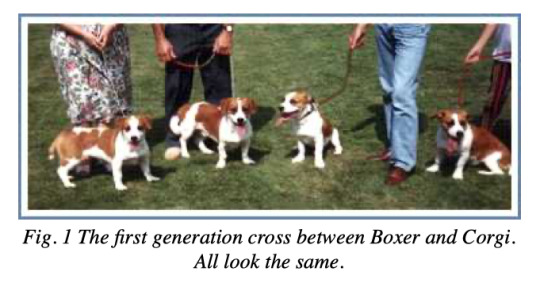
did you know some people once tried outcrossing boxers with corgis to get a naturally bobbed tail in the breed
89 notes
·
View notes
Text




🐱 Marguerite x Savannah [AAFP Position Statement: Hybrid Cats]
📸 Purebliss Cattery
🎨 Black Spotted Tabby
33 notes
·
View notes
Text
i don't even think one has to go as far as to unravel the whole idea of breed, registry and stud books, because i know for a fact that in other animals one has managed to have all of these things without going fckn batshit
#my ideal would be for something like the current outcross strategies to be the norm#there are dog breeds - working ones primarly - that function like this#some of the reindeer breeds come to mind#wherein you bring your dog to a specialist show and the breed specialist has a go at it and if he says hmm yep looks about right#congrats your dog is now in the stud book#makes it a lot easier for those breeding for a purpose to have access to a registry - accessibility and everything that comes with that#without having to make concessions for conformity#because i do believe very. very strongly in pedigrees in the same way i believe in health testing#not for the sake of blood purity so much as for known history#these are tools that can and should be used to the benefit of our dogs
58 notes
·
View notes
Text
Okay, I haven't wanted to talk much about the peafowl lately, been just kinda dealing with Stan's passing, but! I have news I don't want to keep quiet, so here we go with a little announcement.
I've been helping a friend of mine with a bunch of peafowl genetics work lately, as he's trying to prove out a really neat phenotype of speckled and white peafowl that showed up in his breeding stock, and he just spent tens of thousands of dollars importing two new morphs from Europe: European violet (aka, my dream morph) and Ultramarine (pretty and only otherwise being produced by TWO breeders in the WORLD). When Bill heard about Stan, he asked if I was going to go to a large farm auction that's a few hours from my house. I don't, normally, since it's a few hours from my house and the auctions usually make me kinda sad when it comes to peafowl (they stress out SO MUCH) even though it's cool to see how much they're going for at a wider audience auction.
Then he told me he would be going, and that if I wanted to come down the day before the auction, he'd bring me another male, to replace Stan. I had already made plans to hang onto Bismuth, at least for a few years, and to pick up babies from Indie x Arcana/Eclipse this november, including a male, so I didn't really need another male, and don't have the cash for one anyway. He said no, he meant one of the split EUV males from last year's first-USA breeding. For free. As a thank you for helping him.
To put this into perspective, importing the birds is a ~$10k affair, per bird. I had fully resigned myself to never even SEEING one of these birds in person, much less ever owning one. Even if someone else got them imported, they would remain thousands of dollars for the first few years, and quickly become mixed with other stuff, potentially even be lost by people breeding to purple. He went in on a group import with another breeder and they have both just started selling the full-color birds for over $2k apiece (alongside Ultramarine, which before their import was bred by TWO people in the WORLD, and babies from that are going for almost $7k each, but EUV is more widely spread). Splits (like the one I will be getting) are being let go for $750. This is also the color I have desperately wanted since I first saw them 8-10 years ago (though I believe they've been around slightly longer), but that I had resigned myself to never actually having.
To put it mildly, I'm probably going to burst into tears when I see Bill and this bird. It's going to be super embarrassing. And then I'm going to have to build more pens. And then I'm going to have to get as plain-blue, pure-indian blue hens as I can find, and become one of the most serious curators of plain pure EUV in the US, because I know the other two who have them currently will be outcrossing to other patterns/colors immediately and the people buying them will likely be doing the same, and everyone will be clamoring to make them into high Spaldings ASAP, or won't know not to cross them to purples and wreck the color.
Here's the sire cock, the one imported:
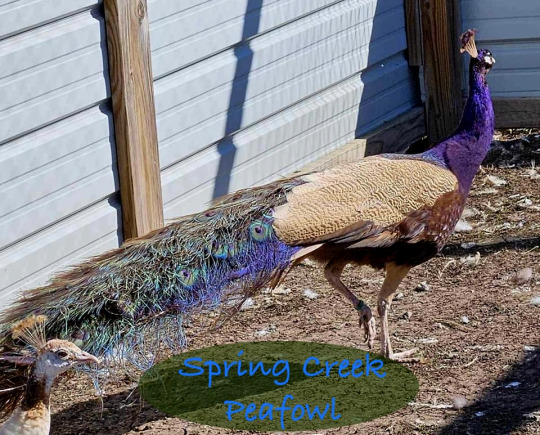
You will notice that this bird is purple in full sun, from the sunny side. That's the main difference between European violet and US purple- a US purple looks blue until you get the right angle on the sun vs the bird vs the camera, and you have to get the bird between you and the sun, so the purple is often in the shadow side- visible to the eye but not the camera. EUV is just purple. Even from the sunny side!!
And the Ultramarine, in case you were wondering about their color:


(pics reposted w/ permission from Bill)
The breeder is Spring Creek Peafowl, and in case anyone is secretly a peafowl breeder or knows other peafowl breeders with too much money that want in on a new color morph, he DOES have UM pairs and EUV hens (and more split males) for sale currently, for less than the only other person in the US that has them. They're still pricey, but cheaper. I WISH I had the extra to have my friend add on an EUV hen, but alas, I will have to wait to make my own in a few years. Even just the opportunity to do so is something I never expected to have!
#peafowl#my pets#longfeather lane#cool cool cool i'm crying about it again#but listen I am OVERCOME with happiness okay#Can't wait to cry in the middle of a VERY public place over a bird#can i gofundme a bird?? is that allowed in their tos
618 notes
·
View notes
Note
Hey question. Is it normal for some Ampharos to keep the fluff they had as a Flaffy? My Ampharos kept a bit of her fluff and even gres a bit more, she's fluffy around her neck, head, hands and tail. I'm sure this is just something her herd had because I know someone who got a Mareep from the same herd as also had a fluffy Ampharos. I just want to be sure if thats healthy or not.
it's a little unusual, though not necessarily harmful. it sounds like one of the breeding mons in that flock has a genetic mutation that encourages extra wool growth- possibly through outcrossing with wooloo.
the main concerns would be overheating and excess electricity production, both of which can be solved by regular grooming to help shed out the wool. make sure to get rubber grooming tools and plenty of anti-static spray!
54 notes
·
View notes
Text
anyways i think its funny that it is basically implied these non american breeders in this scenario are like, held at gunpoint and forced to import and breed inbred, temperamentally unsound dogs into their lines. Nobody is making you do that babe.
#dogblr#purebred dog folk being purebred dog folk#if your breed is at SUCH risk of inbreeding depression as implied it is time to open up the studbooks and do an outcrossing program#just my opinion
15 notes
·
View notes
Text
some isopods I’ve been messing around with recently:

first is a low-white piebald mutation of Porcellio scaber, on an orange base. I didn’t expect these to breed true, but I’ve got several now and find them quite charming.
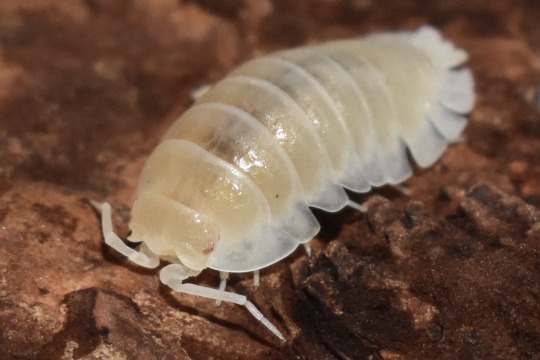
second is another double mutant, amber-eyed Armadillidium nasatum from the white body “Pearl” morph.
both morphs I’m working on outcrossing to gray wildtype to see what they’ll look like without another body color gene influencing them. very curious if the nasatum will give a white body color in addition to eyes, or if there’s something else that’s being masked by “Pearl”.
349 notes
·
View notes
Note
Random question; I often see blogs talking about unethical dog/cat breeds, for curiosity's sake; are there any healthy cat breeds? (in the same way any cat can be healthy it's always a luck of the draw)
And what would you consider the healthiest breeds?
I figure we just don't talk about the healthy breeds as much in the same way we don't talk about averted disasters, like the y2k of cats 😅😅
Honestly, most cat breeds tend to be fairly healthy--- the unethical breeds tend to be outliers rather than the rule. There's usually more outcrossing in cat breeds compared to dog breeds, which certainly helps reduce inbreeding problems.
I can't think of any one breed that would be The Healthiest, tbh. If I had to pick one, I'd probably say the Turkish Van is up there. They aren't super popular, so they haven't really been picked up by unethical breeders, they're a landrace breed, and they don't exhibit any physical extremes (like the super short nose of a peke persian). Their coats are easy to take care of and they often enjoy water (including baths).
64 notes
·
View notes